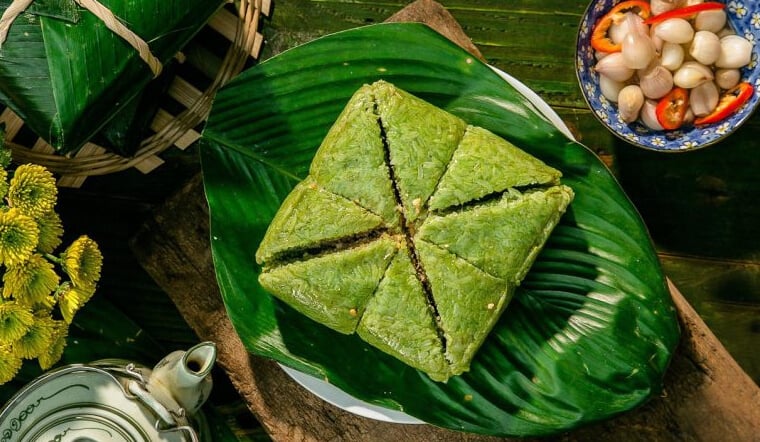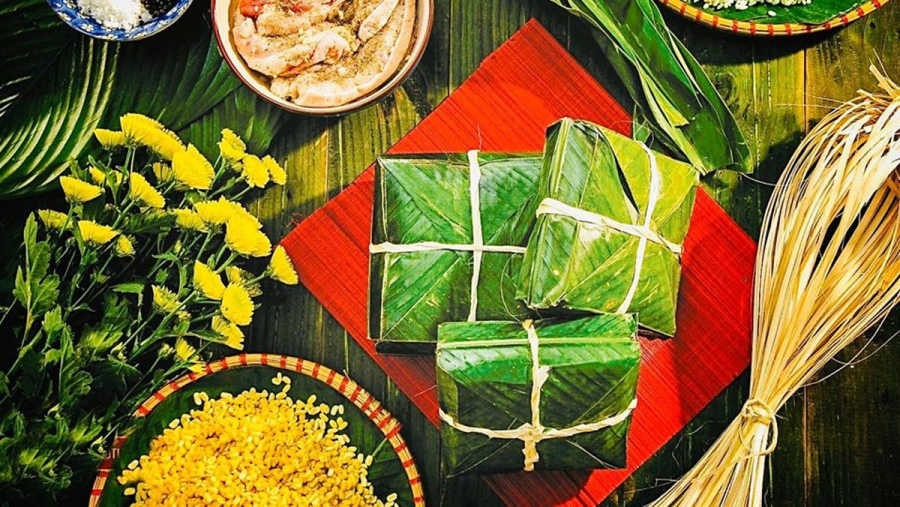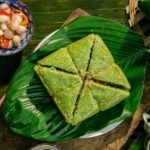How many calories are in a banh chung?
According to nutritionists, how many calories are in 100g of banh chung? How many calories are in 100g of banh chung?
Banh chung is a nutritious and healthy food. In 100g of banh chung, it provides about 181kcal (1 kcal = 1000 calories), 4.3g of protein, 4.2g of fat, 31.6g of carbohydrates, 0.6g of fiber, 26g of calcium, 0.94g of iron, and 1.4g of zinc.
What are the benefits of eating banh chung?
Helps cool down the body and detoxify: With ingredients containing mung bean, banh chung has a cooling effect, smoothens the skin, and detoxifies the body. In addition, sticky rice in banh chung also helps treat sweating, dandruff, dizziness, etc.
Supplementing protein: With pork filling, banh chung is a source of protein – an essential nutrient for all ages.
Antibacterial and antifungal: The pepper in the ingredients of banh chung contains oleoresin with antibacterial and antifungal properties, supporting the blood clotting process.

Prevents bloating: Onions in the ingredients of banh chung have antiseptic properties, preventing bloating, slow digestion, or intestinal inflammation…
Good for digestion and diuresis: Banh chung leaves have a cooling effect, help detoxify and diurese the body. Additionally, banh chung leaves preserve the cake for a long time, keep its green color, fragrance, and appetizing taste that stimulates digestion.
Things to note when eating banh chung:
Obese and overweight individuals should not eat banh chung because it contains many nutrients that can increase the risk of weight gain.
People with open wounds should not eat banh chung: Because banh chung can cause your wounds to itch and heal slower than usual. Therefore, never eat banh chung when you have unhealed wounds.

People with diabetes: Banh chung is a high-energy food, containing sufficient carbohydrates, protein, fat, vitamins, and minerals. Therefore, people with diabetes should not eat too much as it can increase blood sugar levels and affect health.
People with stomach pain: Banh chung contains sticky rice and mung beans, which are two ingredients that can cause bloating, sour belching, and indigestion. Therefore, those with a history of stomach pain should not eat this type of cake unless they want their condition to worsen.































